All issues

Volume 59 (2007)
- Issue 4 Pages 193-
- Issue 3 Pages 123-
- Issue 2 Pages 71-
- Issue 1 Pages 1-
Predecessor
Volume 59, Issue 1
Displaying 1-6 of 6 articles from this issue
- |<
- <
- 1
- >
- >|
-
Focusing on the Interactions of Local ActorsTadashi SUGIURA2007Volume 59Issue 1 Pages 1-23
Published: April 30, 2007
Released on J-STAGE: April 30, 2010
JOURNAL FREE ACCESSThe objectives of this paper are 1) to examine the processes of urban redevelopment of San Francisco Japantown and analyze its structure focusing on the role and interactions of various local actors which operate inside as well as outside the arena of redevelopment, and 2) to consider the role of redevelopment for the changes in the built environment of this urban ethnic enclave.
The physical deterioration of the built environment of the Western Addition area of San Francisco in which Japantown or Nihonmachi is located has been going on since the end of World War II, and the area was selected as an object of large-scale urban renewal in 1948. The actual redevelopment of Western Addition was divided into two parts, the Western Addition Area-1 project (A-1 project) and the Western Addition Area-2 project (A-2 project). The A-1 project was characterized by so-called slum clearance-type urban renewal which was implemented through the strong leadership of San Francisco Redevelopment Agency (SFRA), and Japan Center, a big commercial space, was newly created in the 1960's through the introduction of a big Japanese capital, Kintetsu Group.
The A-2 project was different in nature from the A-1 project. Community people became more sensitive about the results of redevelopment and organized some community groups such as the Western Addition Project Area Committee (WAPAC), which came to be involved in the processes of redevelopment. For the redevelopment of the rest of Japantown area, a new community development corporation, the Nihonmachi Community Development Corporation (NCDC), was established by businessmen in Japantown and controlled the whole redevelopment processes over the four-block area north of Japan Center under contract with SFRA. Although the total clearance of the area was avoided, the priority of development was given to commercial revitalization and commercial areas have increased in number and size. Another part of the A-2 project was the Japanese American Religious Federation (JARF) project, which created several residential buildings with 245 apartments in total mainly for low- to moderate-income people. This JARF project supplemented the mainstream economy-oriented redevelopment led by SFRA, Kintetsu America, and NCDC with a large-scale housing development. While the A-2 project was proceeding, a grassroots community organization, the Committee Against Nihonmachi Evictions (CANE), was formed in 1973, and the members were actively involved in activities against the mainstream power of redevelopment aiming 1) to stop the large-scale destruction of Japantown by redevelopment, and 2) to protect the rights of residents and small businesses. We consider SFRA, Kintetsu America, NCDC, JARF, and CANE as the principal local actors in the arena of Japantown redevelopment.
Through these redevelopment processes, the built environment of Japantown has been largely changed. The southern part of former Japantown has been converted into a large-scale commercial space comprised of a hotel and commercial mall buildings. This area is considered to be an ethnic tourist town, which serves mainly visitors from outside the local Japanese community. The four block area north of Japan Center has also changed into a tourist-oriented ethnic business town, but the features of a traditional ethnic town for the local ethnic community have remained to some degree. These complex characteristics of present San Francisco Japantown are considered to be the inevitable results of the structure of redevelopment above mentioned.View full abstractDownload PDF (3016K) -
Jun TSUCHIYA2007Volume 59Issue 1 Pages 24-27
Published: April 30, 2007
Released on J-STAGE: April 30, 2010
JOURNAL FREE ACCESSDownload PDF (3607K) -
2007Volume 59Issue 1 Pages 28-29
Published: April 30, 2007
Released on J-STAGE: April 30, 2010
JOURNAL FREE ACCESSDownload PDF (284K) -
2007Volume 59Issue 1 Pages 30-46
Published: April 30, 2007
Released on J-STAGE: April 30, 2010
JOURNAL FREE ACCESSDownload PDF (2670K) -
2007Volume 59Issue 1 Pages 47-54
Published: April 30, 2007
Released on J-STAGE: April 30, 2010
JOURNAL FREE ACCESSDownload PDF (1283K) -
2007Volume 59Issue 1 Pages 57-64
Published: April 30, 2007
Released on J-STAGE: April 30, 2010
JOURNAL FREE ACCESSDownload PDF (1326K)
- |<
- <
- 1
- >
- >|